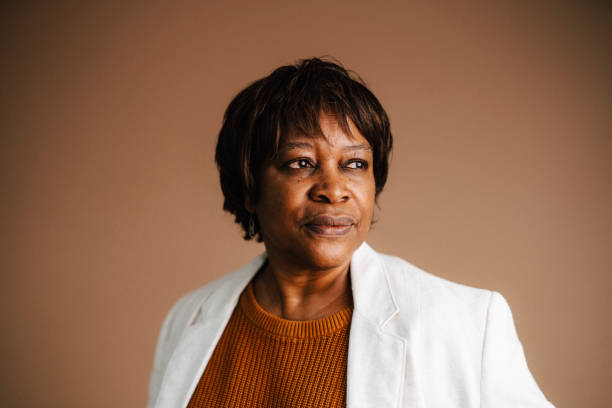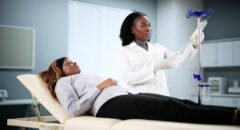
An often-deadly type of stroke -- subarachnoid hemorrhage -- is on the upswing in the United States, particularly among Black people, new research shows.
What is a subarachnoid hemorrhage?
Unlike the more common ischemic stroke, subarachnoid hemorrhage happens when there is bleeding in the space between the brain and the membrane that covers it. It is often caused by an aneurysm, a bulge in a blood vessel, that bursts or leaks.
This type of stroke, which comprises about 5% to 10% of strokes, is rising in certain groups, especially older men and women, middle-aged men and disproportionately in Black people, researchers say.
Symptoms include:
- Loss of consciousness
- Double vision
- Nausea or vomiting
- Severe headache — the worst headache pain you've ever had that feels different from other headaches
- Trouble speaking
- Drooping eyelid
- Confusion and trouble concentrating
- Sensitivity to light
- Neck stiffness
- Seizures
A characteristic of subarachnoid hemorrhage is having the worst headache of your life, Otite says. "A particularly severe headache that just comes out of the blue and gets to maximum severity within a very short term," he notes.
This would be less likely to occur with other forms of stroke, such as ischemic stroke, which is due to a blood clot rather than a bleed.
"Although other signs of strokes, such as weakness and facial droop and speech disturbances, can also occur in subarachnoid hemorrhage, headache would be much more consistent with subarachnoid hemorrhage compared to the others," Otite says.
Additional signs could be severe vomiting, confusion, sleepiness or even becoming comatose within a short period of time.
RELATED: What You Don’t Know About Strokes Could Kill You
Why the rise?
"It's on the rise, but the rise is not universal," says study co-author Dr. Fadar Otite, assistant professor of neurology at SUNY Upstate Medical University in Syracuse, N.Y.
Some of this can be explained by risk factors like high blood pressure. Black people have been more likely to develop high blood pressure at earlier ages and to have uncontrolled blood pressure, Otite shares.
"But I truly believe that the underlying factors responsible, especially for the racial differences in subarachnoid hemorrhage, actually go beyond risk-factor control, but into other factors like access to health care, access to poverty and even structural racism," Otite adds.
For the study, researchers reviewed state hospitalization databases in New York and Florida between 2007 and 2017. They found more than 39,000 people were hospitalized for non-traumatic subarachnoid hemorrhage -- caused by a ruptured aneurysm or high blood pressure rather than trauma.
The team then used U.S. Census data to calculate the annual rates for this type of stroke in those two states, breaking down the information by age, gender, race and ethnicity.
While numbers of this type of stroke were 11 per 100,000 in all participants, women had 13 cases per 100,000 and men had fewer -- 10 per 100,000.
For middle-aged men, 45 to 64, rates were 4 per 100,000. But incidence rose with age, with men 65 and up having 22 cases per 100,000.
In Black people, the rate was 15 per 100,000 compared to white people's average of 10 per 100,000.
The study found that incidence increased by almost 2% a year for Black adults while it didn't change for other racial groups.
Overall, incidence increased by 0.7% on average per year, rising by 1.1% in middle-aged men, 2.3% in older men, and 0.7% in older women, the study showed.
Otite says the increase in older groups of patients may be related to the increased usage of blood thinners for treating conditions like abnormal heart rhythm (atrial fibrillation). "And it can also be in part due to increased utilization of imaging over time to screen for patients presenting with neurological complaints like headache in the emergency room," he adds.
Researchers were not able to differentiate between patients whose strokes were caused by aneurysms and those who had strokes that weren't, which is a study limitation.
RELATED: 7 Things You’re Doing To Cause A Stroke
How to reduce the racial gap
Better preventive health care could help reduce the racial gap, Otite notes.
Some of these aneurysms could be found before the rupture, and that's more likely to happen with good access to health care, Otite says.
Knowing trends in different types of strokes can also help experts identify gender and equity gaps that can be addressed to improve patient outcomes, according to Dr. Alexis Simpkins, a stroke specialist at Cedars-Sinai in Los Angeles.
Stroke is the leading cause of long-term disability and adults worldwide, Simpkins notes.
You should be monitored and treated for high blood pressure, and manage your risk factors for it, she says.
"So safe places to exercise outdoors, access to medications, access to physicians -- all of those things can lead to the accumulation of life years lived with stroke risk factors," Simpkins adds.
If you have any signs of a subarachnoid hemorrhage, you should seek emergency medical attention. The sooner the bleeding in your brain is controlled, the better your outlook will be.









